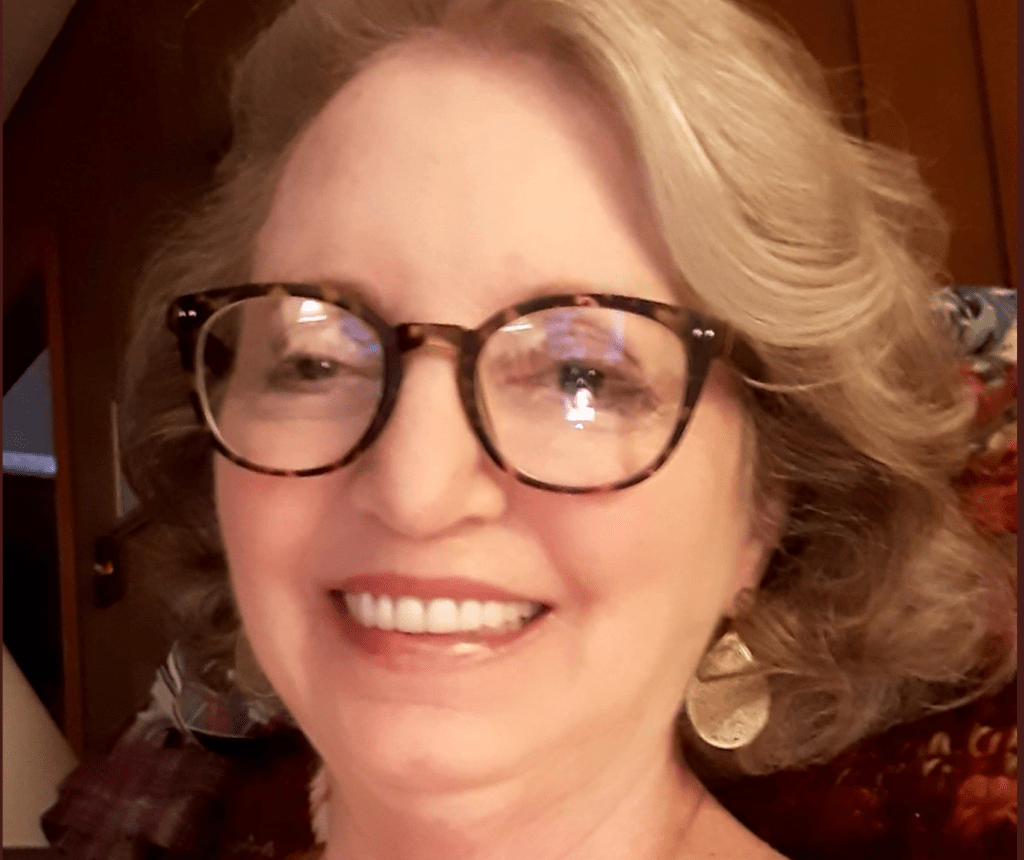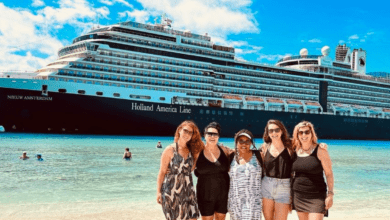Beth Maples-Bays came out in Missoula, Montana, in 1978 which, she explains, was a “little liberal mecca” at the time. Missoula’s “feminist organizations mirrored the national women’s movement,” according to Montana Women’s History. In her office, sitting in front of a FEMME AT WORK sign, Beth tells me she first “fell deeply in love” with a woman in the late ‘70s, as she became part of a collective called Women’s Place. Women’s Place was a rape crisis center founded by Judy Smith, that Beth explains did rape crisis, tackled domestic violence – including violence against children – and helped with pregnancy options. They “worked closely with Blue Mountains Women’s Clinic, which was the abortion provider in Western Montana at the time.” There are none in the area now.
When Beth came out, she had many real-life lesbian role models to look up to. One of these lesbians was Dianne Sands, who she “still adores to this day,” now “a state representative [and] an expert on women’s history, especially Montana’s women’s history.” While Beth found role models off the screen and out of books, she still read Mary Daly, Andrea Dworkin, Suzanne Brown Miller, and Zsuzsanna Budapest. Beth says, “I found my path, found myself…and was so happy.”

Turmoil and Trauma
Beth and her partner at the time, Julie, built up a momentum of feminist groundwork. Beth ran consciousness raising groups, which was her “first foray into activism.” The CR groups weren’t something other feminists weren’t keen on running because it involved so much “turmoil and trauma.” Beth had come from a “marriage situation,” prior to coming out as a lesbian, where “there were children involved, and it was ugly.” She could identify with the traumatized women.
In December 1980, Beth’s ex-husband kidnapped her children and wouldn’t tell her where they were, or let her contact them. She managed to convince him to meet her in Knoxville, Tennessee, packing up “everything [she] owned in a Subaru Brat…with the smallest u-haul you could ever get on the back.” This included some of her mother’s items, such as her piano. Beth’s mother was murdered when Beth was nineteen, by her “step-monster” – step-father – “who brutalised her and eventually murdered her.”
Not only was Beth carrying her own, Julie’s, and her mother’s things, in the Subaru Brat — with the smallest u-haul of all time attached to it — but Julie was in a cast at the time, after suffering an injury. They also had a beagle and Cairn terrier. Beth laughs, “the first five-hundred miles were black ice.”
Starting From Scratch
By New Year’s Eve, December 1980, Beth realised Knoxville wasn’t the lesbian feminist, liberal mecca of Missoula. Knoxville’s lesbian scene was quite like the “butch/femme bars of 1950s, New York City.” Beth “made it her project” to bring some kind of lesbian feminist community to Knoxville. By 1981, she founded Mountain Womyn’s Coalition, the second ever lesbian feminist organization in the history of East Tennessee. The first was East Tennessee Alliance of Lesbian Activists.
The first thing Mountain Womyn’s Coalition did was produce Kate Clinton, a popular lesbian comedian at the time, at a place loaned to them by the local black community. The production was $150 altogether — which was “even good back then” — with the help of donations, including a keg donated by the local gay bar. It was all organised via telephone. Printing about it was dangerous.
Due to missing the last semester of high school, to “keep [her] mother alive,” Beth wasn’t allowed to go straight to university. So, in 1981, she “snuck around the rules” by enrolling, with a full load, as a non-degree seeking adult, making a 4.0. They welcomed her with open arms and she received a $500 scholarship. Beth picked nursing as her major and made it into the nurses’ honour society while she was still a junior, and was looking after two children and her grandmother.
Beth began working in women’s health, including at Planned Parenthood. Because she wanted to learn how to perform an abortion – in case it was made illegal – she worked at Volunteer Women’s Clinic, which offered them. She worries about abortion access today, with four Knoxville clinics dwindelling to one.
Wild Flowers
Julie and Beth stayed together for ten years. Beth explains that “when [she originally] came out, everyone [in the lesbian feminist community] had to be completely androgynous.” So Beth cut her hair off and didn’t wear dresses. “But I was still femme,” she laughs. Beth thought, at the time, “Julie, when we break up, I’m getting myself a real butch…If I have to wear a dress to get one of those, then I will.” She did. When Beth and Julie broke up, Beth dated a drag king for four and a half years. Eventually she “got tired of all that.” She “wanted someone with [her] intelligence.”
Then Beth met Sam. She said, “one night we were all in my kitchen and I was cooking, as usual, and there was this butch person – a masculine looking woman – and we started talking about wild flowers. Everybody thought we were crazy because they weren’t into stuff like that, but Sam was into wild flowers and I was too. So we started talking. And we talked. And we talked. And guess what? We’re still talking 30 years later.”
As a proud femme, Beth is very concerned about the pressure put on butch lesbians of today. “I am concerned we are losing all our butches… because I lost mine. Although we’re still together, I lost my butch ten years into the relationship. We were in a butch/femme community at the time and it wasn’t that big of a deal, [butches transitioning] just seemed like the next step.” Beth says, “I love Sam and I will always love Sam, before and after — still do.” Sam wanted to transition for thirty-five years before doing so and Beth respected — and respects — her partner’s autonomy. However, Beth is alarmed by the noticeable rise — and quick turnaround — of butch lesbians transitioning in the decades since.
Hanging On and Adding On
These days, Beth turns her attention to lesbian-focused activism. She founded Lesbian Echoes (@lesbianechoes), “a podcast about lesbians over seventy.” Beth explains, “I began doing this because young lesbians, and lesbians who are just coming out, who are not necessarily young, need role models. They need role models! I’m going to have an eclectic mix of ordinary women and not so ordinary — kinda famous — women, because every experience is important.” Beth, like many of us, confesses that she “longs — yearns — for women’s community.”
Because Beth lives in a primarily rural region, she admits “it’s not New York City!”, and has admirably “started from scratch” more than a few times, I asked her for some tips on starting a post-covid, regional/remote, lesbian-focused group of today. “I hate to say it, but Facebook [and] Twitter,” she advises. “I’d be clear who you want in a group. What we’ve done here, to draw in more rural lesbians, is to have gatherings. Bonfires. Hiking — of course that leaves me out, I can’t see or hear and I’m old — but I can do bonfires!” Beth laughs. “We used to have dances, oh it was so wonderful.” In the spirit of rural living, Beth suggests, “If there are people you feel safe with, you can offer rides [if they don’t have a car or a truck], and find a place that’s hopefully free!”
Beth leaves us with a bit of advice: “hang on to what you’ve got, and add on. That’s all you can do. It may take some time. You have to learn patience…I learned patience in my garden. By planting a seed and watching it grow. Sometimes they’d surprise me and they wouldn’t come up for a couple of years! Like my Tiger Lillies, I threw the seeds across my lawn and they shot up when I didn’t even remember planting them! Just be sure you wear your sunscreen!”




